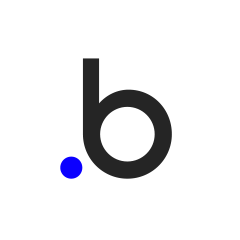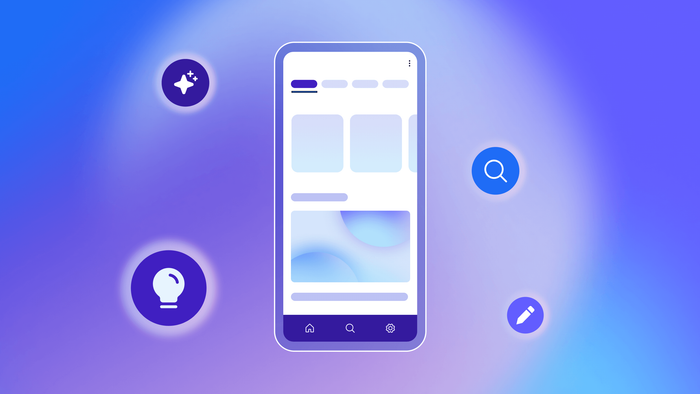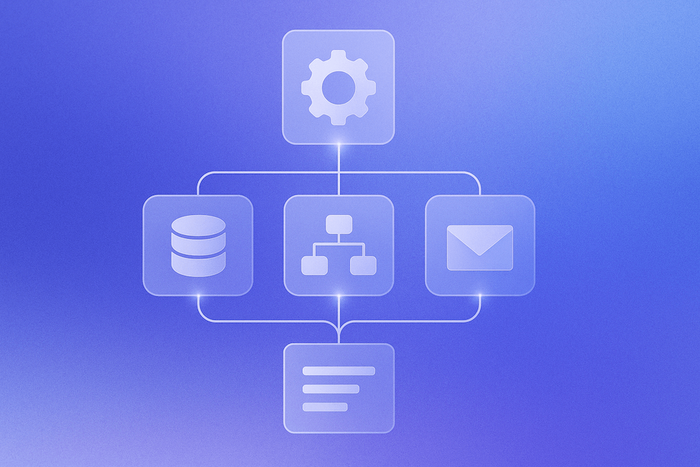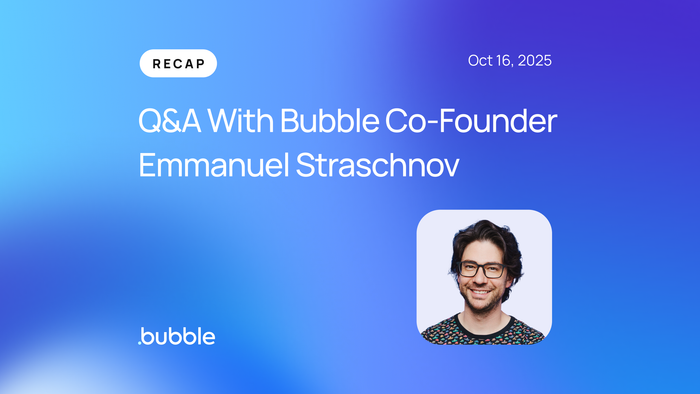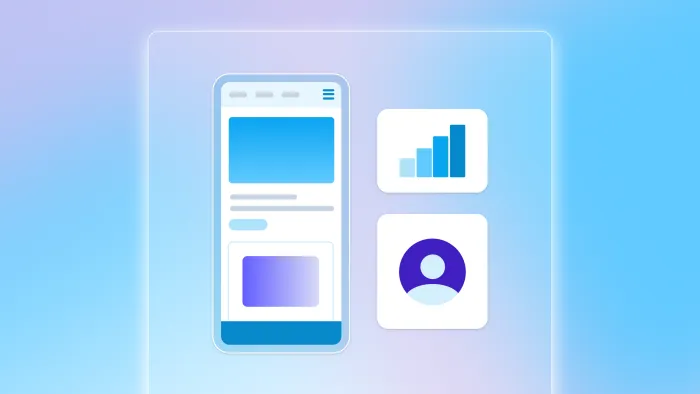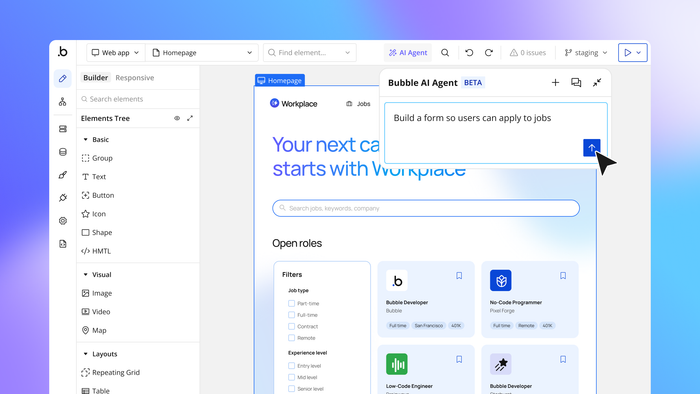Ideas used to be the easy part.
Now, making an app is easier than ever with AI. But coming up with an idea that’ll actually make your app useful, scalable, or even profitable?
That’s a lot harder.
Thinking of a truly promising mobile app concept isn’t as simple as plucking out a ready-made idea from an online listicle (or an AI chat) and spinning it up to instant success.
Successful mobile apps usually come from ideas the founder is really invested in, knows a lot about, and has a truly original POV or solution for. You won’t find those easily — and you won’t find any silver bullets in this guide either. However, what you will find is a guide to what makes great ideas work, how to find them, and some examples to prompt your brainstorming.
Elements of the best mobile app ideas
Every great app idea — one that launches fast, scales quickly, and solves real problems for users (sparking user loyalty) — has a few things in common. When you’re testing out new mobile app ideas, vet your ideas against this list to see how much sticking potential it has:
Clear problem and solution
The hardest, and most important, element of an app to get right. The way to sort the wheat from the chaff.
Does your app actually introduce a new solution to a real problem?
Far too many apps are copycats of already-existing ideas (“we do it better, though!”). This can be a tough sell when scaling an app in a crowded market. Worse, they solve a problem that doesn’t really exist.
Ask yourself:
- Does this app idea target a real, felt, painful problem?
- Does this app idea solve the problem in a new or better way?
- Is the connection between the problem and your solution clear?
If you can’t define how things would be different if your app existed, you may need to drill down deeper into unsolved problems to clarify your idea and solution.
Defined audience
Finding a clear problem and solution points to another element of an innovative mobile app idea: the right audience.
Most problems are only a problem for specific audiences. Working moms might care a lot about how hard it is to get their kids into a summer camp that fits the schedule, budget, and their kids’ interests, but someone without kids may not even know that problem exists.
The same is true of most things. Finding your problems to solve also necessitates finding the audience that is most plagued by those problems — and who will be best served by your solution. Once you’ve defined your audience, you also need to make sure that:
- The audience exists and needs a solution to this problem. An app that helps kids raise VC funding has an audience, in theory, but in reality, most kids aren’t raising VC funding, even if they’re learning to code or building their own apps.
- The audience is large enough to support your goals. A simple app to help your local baseball team manage sign-ups, scheduling, and snacks necessarily has a small audience. But if you’re looking to scale and grow as a business, the audience looking for a solution — i.e., the target market — needs to be large enough to support your goals for growth and revenue.
- You have reasonable access to this market. Your interests, demographic, affiliations, and experience all play into what markets you have access to. For example, someone who’s an avid birdwatcher will find it easier to market to and reach other birdwatchers. Making an app that caters to ultra-wealthy millionaires or billionaires isn’t impossible, but it’ll be a tough market for most people to reach.
Strong founder-market fit
Speaking of audiences and founders, strong founder-market fit is a key factor in many great app ideas.
Founder-market fit doesn’t mean that you necessarily need to be a part of your target audience, but the founder should have some reasonable connection, overlap, or investment to the problem they’re solving or the audience they’re solving for. Many great app ideas start as a solution to a problem for just one person — even for yourself.
Case in point: Wordle — the popular word-guessing game that went viral before being purchased by the New York Times for more than $1 million — was originally built by a software engineer as a simple game for his partner.
Many successful builders on Bubble have similarly strong founder-market fit:
- Artizen, a community-funding platform for artists, was founded by René Pinnell after more than a decade in Hollywood observing how “rigged” the traditional funding process can be.
- Cuure, a personalized wellness supplements brand, was founded by Jules Marcilhacy, the son of a doctor and a nutritionist.
- FormulaBot, an AI-powered data analytics tool, founded (and built!) by David Bressler, who has a background in marketing analytics.
Even if your core audience changes over time, strong founder-market fit gives you leverage and traction in crowded markets. Take Messly, for example. Founders Dr. Abrar Gundroo and Chris Kurwie both worked in medicine and initially founded Messly as an app for doctors to find locum tenens (i.e., per-diem) positions with hospitals.
However, as the app grew, they realized they had a bigger audience in recruitment agencies with existing hospital relationships. By rebuilding on Bubble, they could build new features faster to suit the new persona — and scaled their app to a complex product serving more than 25,000 doctors.
Differentiated from competitors
With a solid audience, solution, and founder-market fit in place, you still need a clear point of differentiation to stand out from competitors.
Even if you’re creating a completely new category, you still have competitors. For example, if you’re creating a banana slicer (they exist!), the competitor might not be another banana slicer brand — it might be using a regular knife, or simply not slicing your bananas at all.
Your unique value proposition — how you solve the audience’s problem in an undeniably different and better way — helps you and your customers understand why to choose your app over other solutions.
Technologically feasible
Importantly, your app should be technologically feasible. That is:
- It’s possible to build it with current technology.
- It’s possible for you to build it (either on your own, or you have the resources to hire support).
Of course, even today, there are still things that technology hasn’t been able to solve (even the best apps can’t make me a homemade breakfast every morning, for example).
But for ideas technology can support, it’s never been easier or more accessible to build them, even if you have no coding knowledge or expertise. Gone are the days of hiring a mobile app development company for even the simplest of ideas. Platforms like Bubble give everyone — regardless of experience or expertise — the tools needed to go beyond vibe coding and build and scale a real mobile app.
On Bubble, you get the best of both worlds: On one hand, you get a visual editor that lets you build your app with drag-and-drop tools so you always know what’s happening — and how to make your app look and work exactly how you want it to. On the other hand, you get full control, customization, and power — something often lacking in vibe coding tools.
Aligned with your goals
Finally, your idea should be aligned with your goals for a mobile app — not every app should or needs to become a unicorn or scale to a million users.
- Do you want to scale and grow a business?
- Are you trying to support a local community or niche group you’re part of?
- Are you building a customized solution for your team?
- Do you just want to learn some development skills?
The best mobile app ideas align with your goals so that, at the end of the day, you can be satisfied with what you’ve built — whether or not it ever achieves commercial success.
Mobile app ideas (and how to come up with them)
Sometimes an app idea comes from experience. You or someone you know has a tricky problem, and no one else is solving it. Voila: the perfect on-ramp for a good app idea.
Other times, you may need to search a bit harder to find the right idea. One good way to get started: Look at broader categories, then narrow down audiences, problems, or solutions to come up with an original idea.
From there, you can further narrow down your idea to its core solution or functionality to create a unique value proposition. This can help you create a unique idea and MVP that can help you launch and gain traction before expanding further.
We’ll walk you through some categories you can group apps into to get ideas from. This is by no means exhaustive — but it’ll give you a place to start to find the idea that makes the most sense for you.
Audience-focused app ideas
The old axiom rings true yet again: Start with your audience.
Many successful apps focus on a particular audience with specific needs: parents of young kids, busy commuters, knowledge workers in office settings, people with a specific hobby — the list is endless. A large enough group of people — particularly if they’re underserved by tech currently — can yield endless ideas for good apps.
Start by understanding the needs of this group of people deeply (market research and online forums are a great place to start) and then figure out which of those problems can be best solved with an app.
For example:
- Messly was created to help locum (per-diem) doctors in the UK find good-fit hospitals to work with.
- Flexiple was designed for tech talent looking to find roles at top tech companies.
- BetterLegal was founded to help founders looking to save time and money registering new businesses.
Each of these apps is focused on a specific audience with specific needs. The functionality of the apps grew as the apps scaled — but they first started with an audience who they could build for and support.
If you’re looking to build an audience-focused app, ask yourself:
- What groups of people or types of businesses do you know particularly well? What niche groups or communities are you a part of?
- What problems do they face? Which problems are most painful and hardest to solve? Are any problems often overlooked by outsiders?
- Can any of these problems be helped or solved by a mobile app or some level of automation?
- What are some ways you could help this group save time, money, or headache on their core values or goals?
Activity-focused apps
This category of apps focuses on specific activities, which often look like one of two things:
- It’s designed for a specific activity (i.e., a cooking app, dating app, or a karaoke app)
- The app itself is the activity (i.e. gaming apps, social media apps, language-learning apps)
Even hobbies and fun activities often involve hurdles: high barriers to entry, need for more resources or education, inspiration, help with organizing or managing that hobby, etc. Creative mobile apps can provide support for those hurdles and help people invest in the things they enjoy and care about.
For example:
- Football Edge is a virtual coaching mobile app for soccer players.
- Wonder Words, an AI-powered storytelling app for children’s stories.
- Faceless.video uses AI to help creators make faceless videos for social media content.
These are great mobile app ideas focused around a specific activity or hobby — and finding ways to improve it, manage it, or educate hobbyists more effectively.
Thinking of creating an activity-focused app? Ask yourself:
- What hobbies and activities are you familiar with? These could be broad (i.e., soccer) or narrow (i.e., creating faceless videos for social content).
- What would be one helpful or cool thing an app could do for each of those hobbies?
- What apps already exist for your hobbies? What do they offer, and more crucially, what are they missing? What problems do you face when using them?
- What needs and problems in this hobby or activity are being overlooked?
Personal development app ideas
Take a look at the apps on your phone, and you’ll find that a good chunk of them probably fall into this category: sleep tracking, health tracking, motivation apps, mindfulness or meditation apps, physical fitness or running apps, education apps, and more.
But that doesn’t mean the market is totally saturated. There are just as many personal goals as there are people — and a great app can really help with so many aspects of our physical, mental, emotional, and social health.
For example:
- The Mochary Method app helps high-profile coaching clients translate what they’ve learned from coaching into tangible, actionable processes in their businesses.
- The Attributes Inc. app provides personalized assessments for leadership and team-building workshops.
- Strabo helps people manage and improve their international financial portfolios.
If you’re looking to build a personal development app, ask yourself:
- What expertise do you have that you could share with others?
- What do your friends ask you for advice about most often?
- What emotional or mental struggles have you faced (and overcome) that others might relate to?
- What personal growth tools exist offline that could be reimagined as an app?
- What parts of personal growth feel underserved or underrepresented in current apps?
Problem-focused app ideas
Maybe the best ideas of all — and certainly one of the most common app categories — are those app ideas that come about to solve a specific (and usually very annoying or difficult) problem. These can range from simple utility apps (like the Reminders app) to very complex apps (like Salesforce).
For example:
- Farie is making it easier to buy and sell used cars online, with an e-commerce platform specifically designed for cars.
- Blubinder is a financial navigator and guidance platform making it easier for families navigating common major transitions, like the loss of a parent or divorce.
- HelloPrenup is making signing prenups easier and more affordable with automation.
All of these tasks are typically complicated, time-consuming, and often involve emotional decisions. They’re great candidates for successful apps — but simpler tasks can also be well served by an app, such as with a grocery delivery app, tip calculator app, or a simple restaurant reservation app.
Hunting for a good problem? Ask yourself:
- What tasks have you put off because they were irritating or seemed like too much work?
- What are common tasks that are typically expensive or frustrating to complete?
- What everyday problems do I or people around me complain about regularly?
- What services or tools do people frequently use but seem dissatisfied with? What apps or tools have poor solutions or UX yet are still often used?
- What tasks are still done in pretty much the same way they were 10, 20, or 30 years ago, even though new technology could make them easier?
Bring any app idea to life with Bubble
Whether you’re looking to build an AI-powered financial services app for enterprise use, or a simple event app for your upcoming wedding, Bubble gives you the tools you need to build an app easily, quickly, and affordably.
Best of all? No code needed.
Whatever your level of experience, Bubble’s drag-and-drop visual editor — for your app’s design and functionality — puts you in full control while giving you all the support you need to build your app without code. Build, scale, and launch, for web and on mobile, all in one place.
Plus, Bubble takes care of:
✅ Design, data, and logic. No need to build (and pay for) separate databases and frontends. You can build everything your app needs on Bubble.
✅ Deployment and hosting. Just one click to deploy and your app is securely hosted on Bubble’s servers.
✅ Privacy and security. Bubble’s enterprise-grade security helps you create and maintain a secure app for any industry.
✅ Packaging for mobile deployment. One-click for mobile launch? It’s possible on Bubble. Bubble automatically packages your app and submits it for approval in the app stores.
When you’ve got a good app idea in mind, build it faster and easier on Bubble. Best of all: You can build for free on Bubble until you’re ready to launch. So what are you waiting for? →
Build your app on Bubble's Free plan. No need to upgrade until you're ready to launch your app.
Join building